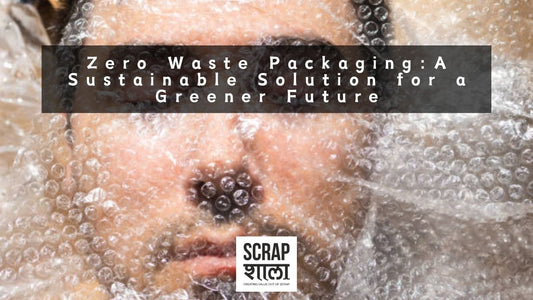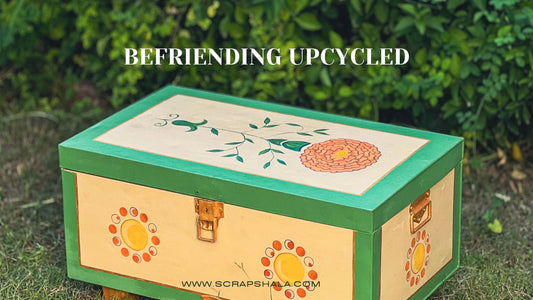In today's world, sustainability is becoming an increasingly important issue, and we are all being encouraged to think more carefully about the products we use and how we dispose of them. Two terms that you may have heard a lot about recently are upcycling and recycling. While these two processes may seem similar, there are some key differences between them. In this blog post, we will explore the difference between upcycling and recycling, and why they are both important in our efforts to reduce waste and protect the environment.
What is Upcycling?
Upcycling is the process of taking an item that is no longer needed or wanted and transforming it into something new and useful. This is done by giving the item a new purpose or function, often by adding value or improving its quality. For example, you might take an old wooden pallet and turn it into a new piece of furniture or turn an old T-shirt into a reusable shopping bag. The goal of upcycling is to create something that is more valuable than the original item and to prevent it from going to waste.
The benefits of upcycling are many. By reusing an item instead of throwing it away, you are reducing the amount of waste that ends up in landfills or incinerators. You are also reducing the need for new materials to be produced, which can help conserve natural resources and reduce greenhouse gas emissions. In addition, upcycling can be a creative and fun way to give new life to old items, and it can save you money by reducing the need to purchase new products.
What is Recycling?
Recycling, on the other hand, is the process of breaking down an item into its raw materials and using those materials to create a new product. For example, plastic bottles can be melted down and turned into new bottles or other plastic products. The goal of recycling is to reduce the amount of waste that ends up in landfills or incinerators, and to conserve natural resources by using recycled materials instead of new ones.
The benefits of recycling are also many. By recycling materials instead of throwing them away, you are reducing the amount of waste that ends up in landfills or incinerators, which can help reduce the negative impact of these facilities on the environment. Recycling can also help conserve natural resources by reducing the need for new materials to be produced, and it can help reduce greenhouse gas emissions by reducing the energy required to produce new products.
What's the Difference?
The main difference between upcycling and recycling is the end goal. Upcycling aims to give new life to an old item by transforming it into something new and useful, while recycling aims to break down an item into its raw materials and use those materials to create a new product. Upcycling is often seen as a more creative and personal process, while recycling is more industrial and involves the use of specialized equipment and facilities.
Another difference between upcycling and recycling is the quality of the end product. Upcycling often results in a product that is unique and has a higher perceived value than the original item. Recycling, on the other hand, often results in a product that is similar in quality to new products made from virgin materials.
Both upcycling and recycling are important in our efforts to reduce waste and protect the environment. Upcycling can be a fun and creative way to give new life to old items, while recycling can help conserve natural resources and reduce the negative impact of waste on the environment. Whether you choose to upcycle or recycle, the most important thing is to make a conscious effort to reduce waste and to make sustainable choices whenever possible.
In conclusion, upcycling and recycling are two important processes in our efforts to reduce waste and protect the environment. While they have some similarities, such as reducing waste and conserving resources, they also have some key differences, such as the end goal and the quality of the product. Upcycling is a creative and personal process that aims to give new life to old items, while recycling is a more industrial process that breaks down an item into its raw materials to create new products. Both processes offer benefits and can be incorporated into our daily lives to make a positive impact on the environment. Ultimately, whether you choose to upcycle or recycle, the important thing is to be mindful of your impact on the environment and to make sustainable choices whenever possible.
At Scrapshala, we have adopted the approach of more sustainable way of remaking new products through Upcycling.
Upcycling at Scrapshala allows us to transform the traditional way of making handicrafts, reviving dying art forms of India and creating respectable livelihood for multiple artisans who gets trained to handcraft our products.



















